|
Dive Deep into Gullah Culture at Sabree’s Gallery of the Arts
By Chantel Britton
2 Comments
Art off the Air: Savannah artist Sabree inspired by Gullah roots, which speak through her work12/15/2020 By Rob Hessler Article Link Here Visitors walking into Sabree’s Gullah Gallery at Savannah’s City Market #4 will experience a full sensory environment rather than just the colorful, vibrant style of painting the artist refers to as “happy art.” They’ll likely catch a whiff of the citrus and eucalyptus scents that Sabree lets waft into the air, followed by the sound of soft music playing in the background. They may also notice cotton and Spanish moss for sale: the latter is an ingredient in Gullah herbal remedies utilized to help with upper respiratory ailments and high blood pressure; the former a reference to her background as a farmer. And most of all, they’ll be greeted by the woman herself, a gregarious and spiritual creator whose warm smile is guaranteed to draw guests to the gallery in. One who has followed the path set forth by her ancestors to create art that tells the kind of stories that form the backbone of the people from which she descends. “Growing up on the farm gave me a rich background,” Sabree told me during our conversation for this week’s Art on the Air. “And it also made me appreciate my culture, which is the Gullah culture.” 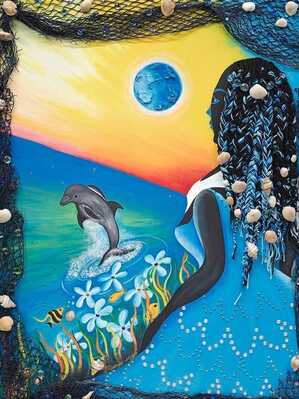 Sabree was part of a huge family, with fourteen siblings, plus an additional six brothers and sisters who were stillborn, for a total of twenty-one children. The three hundred acre farm that her and her family worked grew not only cotton, but also corn, tobacco, and any kind of vegetable that you can imagine. Showing artistic aptitude as a child, she ultimately went to school for art, but found herself minoring in education and initially working as a teacher rather than as an artist. “While teaching those first couple of years, that little voice that we all have, it just kept speaking to me, and it was saying, you need to be telling your story, you need to be painting your story,” Sabree recalled. “And I must admit that I did ignore the voice for a while. “But then all of the sudden that voice, it just kept getting louder and louder and louder until I could not ignore it anymore. And to me it felt like the ancestors were screaming and they were saying to paint what you grew up in, serve the Gullah culture.” And for the artist, when the ancestors give a directive, she listens. So she left her “comfortable life” and “went into the unknown. “I move when they say move,” Sabree laughed. “I don’t play with my ancestors.” That was back in 2010, and although she continued to do some private teaching until 2014, she’s now completely committed to her life as a full-time artist. And she has continued to listen to the not always subtle urgings of her forbearers. “They speak to me in dreams,” she explained. “It can be voices. Sometimes there are certain perfumes or certain spells that come through. Even down to feeling cold or feeling hot. They’re just reminding me to tap into all of my senses and to bring everything that I have to the table.” One such dream brought her to a composition that she’d ultimately gift to the Obama family. The painting, titled "The Risk of the Roots," depicts “the Obama family as children, all of them as children,” described Sabree. “The youngest daughter is sitting in the top of the tree, and she has made a home, so she’ll be the one to preserve the Gullah culture. She’ll pass along that knowledge.” Malia Obama, the elder daughter, is shown gathering moss for the aforementioned medicinal uses. The Spanish moss in the painting is the actual plant affixed to the canvas, a technique the artist frequently uses in her works. 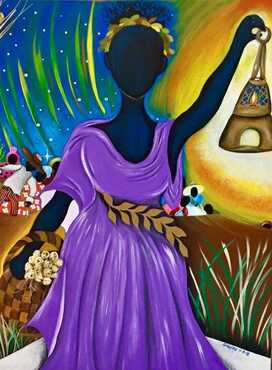 “Michelle Obama…in her hand, she has a bowl container of rice,” she continued. “And in the Gullah culture, we’ve got a thing for rice! “And [Barack] Obama, he’s sitting on the root, but yet he’s a part of the root.” Finally, above Michelle’s head is a beehive, meant to point towards the declining world’s bee population and the notion that “if the bees die, we die,” says the artist. “And so the risk of the root, which is the name of the piece, the risk that the ancestors took in order to get us here, was a heavy burden to bear.” Sabree takes her ancestral legacy as the bearer of such a burden very seriously. As she did growing up on the farm, she still wakes up around 4 a.m. every morning, often spending the whole day painting and at the gallery. In addition to her visual creations, she utilizes her social media accounts to pass along facts and history about the Gullah culture and history. It’s both an obligation and a pleasure. 'Embracing Liberty' by Sabree “It is a big responsibility, but I’m going to tell you something: I enjoy it,” the painter asserted. “It’s another form of teaching. As the old saying goes, once a teacher, always a teacher.” Learn more about Sabree at www.SabreesGallery.com and @SabreesGallery on Instagram. Her gallery space in Savannah’s City Market is at 309 West Julian Street in Studio 4 upstairs. Penn Center National Historic Landmark District will host its 37th Heritage Days Celebration on November 7 – 9 to honor its 157-year history and share the history, art, and culture of the Gullah Geechee people. The 2019 celebration will also include a special educational symposium titled “Reaching Back and Looking Forward: Our Judges and Lawyers” on Friday, November 8 that will facilitate a greater understanding on how black judges and lawyers brought about change in South Carolina and the nation. SC Humanities supported this symposium with a Major Grant.
The “Reaching Back and Looking Forward: Our Judges and Lawyers” symposium will attempt to engage a broader conversation and facilitate a greater understanding on how black judges and lawyers brought about change in civil rights and social justice for African Americans. Some topics of discussion will include the importance of Historically Black Colleges and Universities (HBCUs); the contributions of courageous individuals like Charles Hamilton Houston, Thurgood Marshall, Ernest Finney, I.S. Leevy Johnson and others; and some of the most challenging race and equality issues of today. The symposium will take place from 10:00 a.m. – 12:30 p.m. on Friday, November 8. Tickets are $20/adult and $10/student. Some of the proposed speakers include Danielle Holley-Walker (Dean and Professor of Law at Howard University School of Law), Judge Elaine Mercia O’Neal, Brian Hicks (senior writer for The Post and Courier), Maureen Costello, and Hasan Kwame Jeffries. For more information about the Heritage Days event and the symposium in particular, visit the Penn Center website: http://www.penncenter.com/heritage-days. The mission of SC Humanities is to enrich the cultural and intellectual lives of all South Carolinians. Established in 1973, this 501(c) 3 organization is governed by a volunteer 21-member Board of Directors comprised of community leaders from throughout the state. It presents and/or supports literary initiatives, lectures, exhibits, festivals, publications, oral history projects, videos and other humanities-based experiences that directly or indirectly reach more than 250,000 citizens annually. Image: Reaching Back To Wisdom, Copyright 2019, Patricia Elaine Sabree Interested visitors attended the annual Juneteenth event at the Telfair Museum’s Jepson Center on Saturday to celebrate culture and history. Attendees enjoyed a variety of art vendors, musical performances and informative talks. Patricia Sabree, the featured artist at the Juneteenth event, presented her paintings and gave insight into her historical influences. “This is called Gullah,” Sabree said. “Gullah is not only a people, it is also a language. It is a 400 year old culture derived from west Africa to the coastal areas. Those coastal areas are Savannah, North and South Carolina, Louisiana, Virginia and also New Orleans. When you see the art work, it is very colorful and bold. They tell a story and connect to the spirit.” Sabree’s paintings reflect Gullah and coastal culture from a positive and uplifting perspective. “When seeing it for the first time, many people have said that they see so much happiness, joy and love in the art work. Another name for Gullah art is happy art and the happiness stems from the fact that no matter what we were going through, the spirit of the people could not be broken or shaken; it resonates,” Sabree said. In addition to Sabree, there were other black artists displaying their work and providing historical information to attendees.
Gregory Grant, a historian and basket sower, displayed African art in the form of traditional baskets. Grant spoke to an audience of art enthusiast and told them about the history of art that survived the Middle Passage. “The sweet grass baskets as we do it today is probably one of four of the oldest arts and crafts to survive the Middle Passage,” Grant said. Basket making, wood carving, net making and metal smithing are four art forms that people of African descent brought with them to the Americas. The process of creating baskets survived because people of west African descent that were brought to America to work in rice fields would use the husk to create baskets and make their work easier, Grant told his audience. Other than visual art, museum visitors had the opportunity to experience on-stage storytelling, dance performances and listen to choir songs performed by the men of St. John Baptist Church. Vaughnette Goode-Walker, an on-stage storyteller, encouraged the crowd to celebrate the history Juneteenth. “This year we are celebrating the history of the black church,” Goode said. “We are bridging a gap of the diaspora. Our theme has been the black church. The black church ties into everything. It was the base of freedom. It was the only place we could go and be ourselves.” The Juneteenth event offered historical knowledge, art and activities for children. The community event takes place every June at the Jepson Center.
by: Kim Gusby
Article Link Here
Juneteenth, also referred to as Freedom or Emancipation Day, commemorates June 19, 1865—the day former slaves in Texas learned they were free, two-and-a-half years after the signing of the Emancipation.
This Saturday, June 17, the Mitchelville Preservation Project will hold its third annual celebration to honor the day. World renowned singer, storyteller, entertainer, educator and actress Marlena Smalls and nationally acclaimed artist Patricia Sabree are two of several featured guests for the occasion. They join the conversation with information on raising awareness about Juneteenth, Mitchelville and the Gullah culture. Copyright 2020 Nexstar Inc. All rights reserved. This material may not be published, broadcast, rewritten, or redistributed. By Robert Catanese Article Link Here Local Savannah Artist Patricia Sabree is preserving her roots and honoring her family one stroke at a time.
Patricia is a Gullah Artist, and specializes in this form of art that has been traced back to Western Africa over 400 years ago. Gullah Art, also known as "Happy Art", combines both rich African history with southern roots. Although originating in Western Africa, Gullah Art has influences in Haitian, Jamaican and Spanish Art. Patricia says preserving history through all her hard work and dedication is what Gullah is truly about, "it is my way of preservation, saying thank you to my ancestors and also my way of carrying on the legacy for all those like my parents and brothers and sisters. Patricia and her daughter have written a book entitled "Pass The Path". It is written in both English and native Gullah, and she hand painted every page. She says every painting is full of vibrant colors and tells a story of the fusion of African and Southern cultures. A painting by Patricia Sabree titled Son Raise.
By Peggy Mishoe For The Sun News With all the bad news and ugliness that exists, we are fortunate to have so much beauty and art to enjoy in our area. The following exhibits and events are just a few examples of many opportunities to escape into the arts and history that are offered by Brookgreen Gardens or the Franklin G. Burroughs – Simeon B. Chapin Art Museum. ▪ Gullah Culture…Remembering While Evolving, will be displayed in Learning Lab 1 at the Wall Lowcountry Center at Brookgreen Gardens from noon until 4:30 p.m. daily through March 13. The exhibit of visual art by Patricia Sabree reflects her Gullah experiences while growing up with 15 brothers and sisters on a farm in Lake City. According to a Brookgreen press release, each painting, vibrantly colored and filled with energy, tells a story about Gullah culture and lore. “Love Grows” depicts the work ethic of a woman and child planting vegetables. “Son Raise” showcases the pride of a father and son fishing. And “Before Convenience” portrays the discipline and joy of hard work as a woman cooks on a wood burning stove. Sabree, a resident of Bluffton, says that her work provides reminiscences of the Deep South. “My paintings are shaped by the stories I lived. Fishing off the river bank or swamp land, walking barefoot in the rain, running in the blazing sun, playing in a game of outdoor basketball, being whipped across the legs for not doing a chore, and even enjoying ice cream and cake on a sunny summer’s Sunday.” She is the owner of Sabree’s Authentic Gullah Art Gallery in Savannah, Ga., Sabree’s Headquarters in Charlotte, N.C.; and an online gallery at www.sabreesgallery.com. ▪ Also at Brookgreen, on January 20 and 27, an interactive cultural game show titled Gullah Geechee Mania will be presented at 1 p.m. in the Lowcountry Center Auditorium by Ron Daise, vice president for creative education. The program informs viewers about the unique Gullah Geechee culture and heritage of the southeastern coastal United States. Each guest becomes a contestant who will gain points for answering questions about Gullah Geechee people, songs, history, culture, foods, and trivia. ▪ The Franklin G. Burroughs – Simeon B. Chapin Art Museum at 3100 South Ocean Boulevard in Myrtle Beach has several current exhibits, including FrankLloyd Wright: Architecture of the Interior. According to the Museum’s website, the exhibition contains 28 framed works, including 20 reproduction drawings and eight photographs, representing Wright’s most distinctive interiors. Recognized around the world for his innovative style and modern designs,architect Frank Lloyd Wright originated and popularized the concept that structures should exist in harmony with humanity and their environment, aphilosophy he called organic architecture.” The concept extended not only tostructures’ exteriors, but to the interiors, furnishings and ornaments, insisting that all parts should be as one. Seventeen buildings designed by Wright, who died in 1959, have been honored by the American Institute of Architects. For more information on Brookgreen Gardens at 1931 Brookgreen Drive, Murrells Inlet, call 235-6000 or visit www.brookgreen.org. For the Art Museum, call 238-2510 or visit www.myrtlebeachartmuseum.org. Peggy Mishoe, [email protected], 365-3885. Read more here: http://www.myrtlebeachonline.com/news/local/community/article54259560.html#storylink=cpy by Dianne Owens
MURRELL’S INLET – “Gullah Culture … Remembering While Evolving,” an exhibit of visual art by Patricia Sabree, a native of Lake City, has opened at Brookgreen Gardens. On display in Learning Lab I of the Wall Lowcountry Center from noon to 4:30 p.m. daily through March 13, Sabree’s art reflects her life growing up on a farm in the Roper community, near Lake City. She is owner and operator of Sabree's Authentic Gullah Art Gallery, Savannah; Sabree's Headquarters, Charlotte, NC; and an online gallery at www.sabreesgallery.com. Patricia Elaine Sabree, whose maiden name is McFadden, said she and her 14 siblings spent most of their youth working on the farm where their parents were sharecroppers. “My paintings are shaped by the stories I lived. Fishing off the river bank or swamp land, walking barefoot in the rain, running in the blazing sun, playing in a game of outdoor basketball, being whipped across the legs for not doing a chore, and even enjoying ice cream and cake on a sunny summer’s Sunday,” she said. Her art uses vibrant and vivid colors to depict energy, each painting telling a story about Gullah culture and lore. Now a resident of Bluffton, her work provides reminiscences of the deep south. The farm featured hundreds of acres of tobacco, cucumbers, cotton, corn, string beans, watermelons, and a very large garden, she said. “Father, J.W. McFadden, used a mule and a hand-held plow to plant the garden, which was adjacent to the house. He often said it made better rows for planting. Mother, Elizabeth McFadden, trailed in behind digging holes for the seeds. The children would come along and throw the seeds in the hole and cover them with bare feet.” Sabree obtained a bachelor's of arts degree from South Carolina State University, and a master's of education from Southern Wesleyan. Her art professors from S.C.S.U. influenced her greatly, especially Dr. Leo Twiggs, a Batik artist who most inspired her love for painting. After teaching art for 22 years, Sabree said she heard a little voice telling her she needed a new challenge. In 2010, she left the teaching profession to work Monday through Fridays on her paintings. The artist still has family in the neighboring areas of Lake City, Conway, and Florence, she said, and “No. No one in the family took up farming.” Sabree’s favorite thing to paint, she said, is anything to do with being raised on the farm. “By painting these cherished images, I keep the memories alive,” she said. Next on her exhibit's list is "The Hilton Head Gullah Arts Exhibition" and "The Heritage Day Arts Festival" in Savannah. “The Savannah's exhibition is a group exhibition featuring the works of Gullah-Geechee Artists Natalie Daise, Sonja Evans-Griffins, Jery Taylor, myself, and a few others.” Anyone in Savannah area has a standing invitation to visit with her in her gallery, Sabree's Gullah Art Gallery, Savannah City Market, Studio 4/Second Floor, 309 West St. Julian St, Savannah, she said. “I sincerely thank Ron and Natalie Daise for extending the offer to exhibit my works at Brookgreen. This past Saturday they went above and beyond the call of duty helping me and my daughter install the paintings and other artifacts akin to the Gullah-Geechee Culture. We will be forever indebted to them,” she said. Dianne Owens is editor of the Weekly Observer newspaper that serves Hemingway, Johnsonville and their surrounding communities in South Carolina. |
AuthorSabree wants to keep you updated on news and awards about her. Archives
May 2022
Categories |
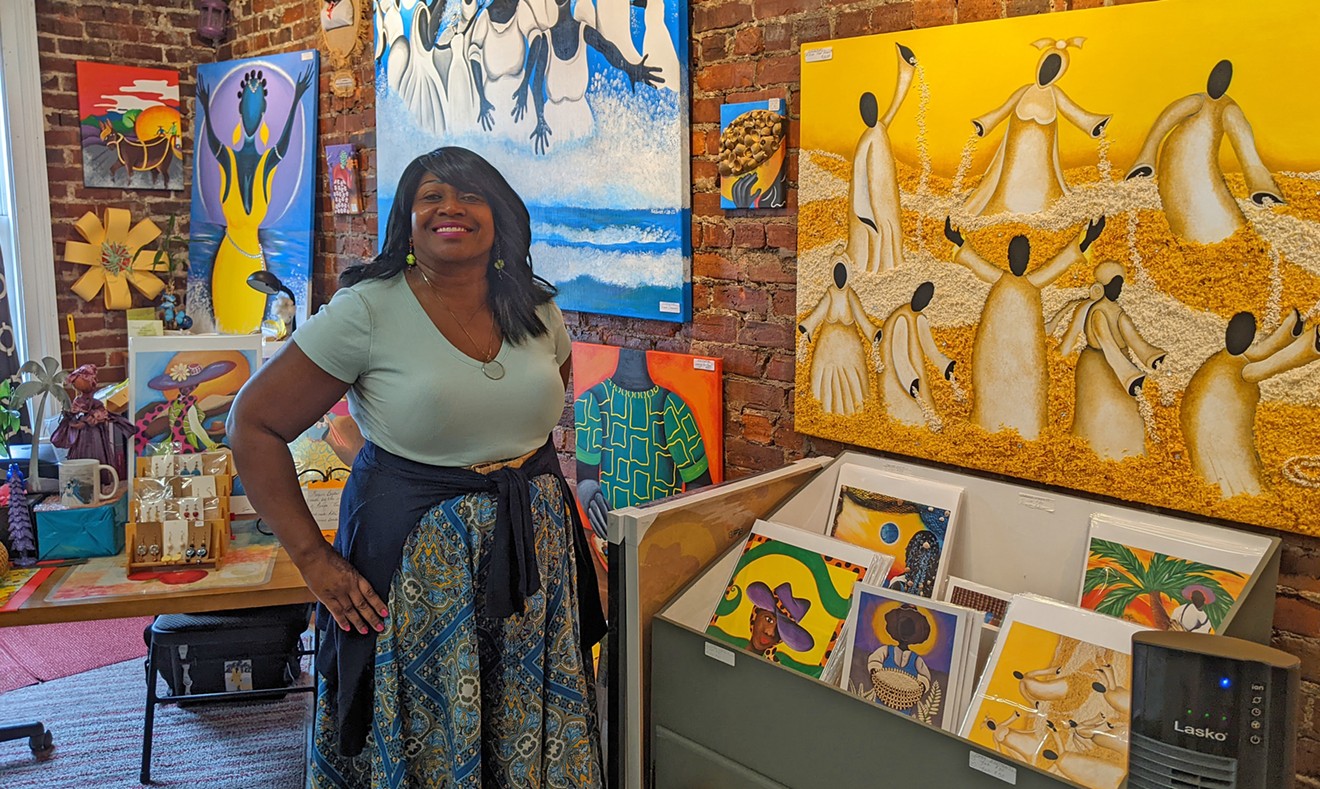

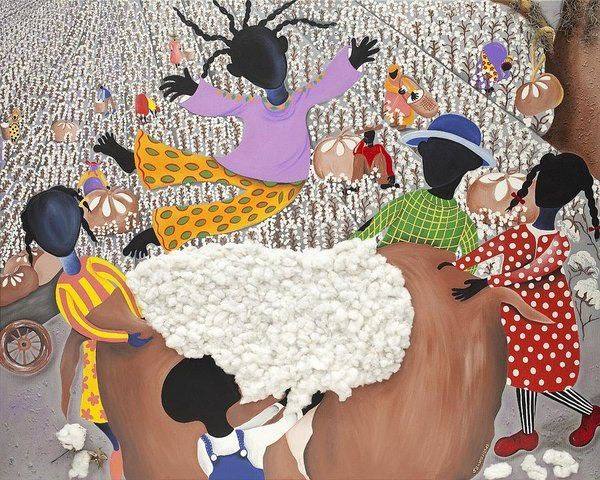




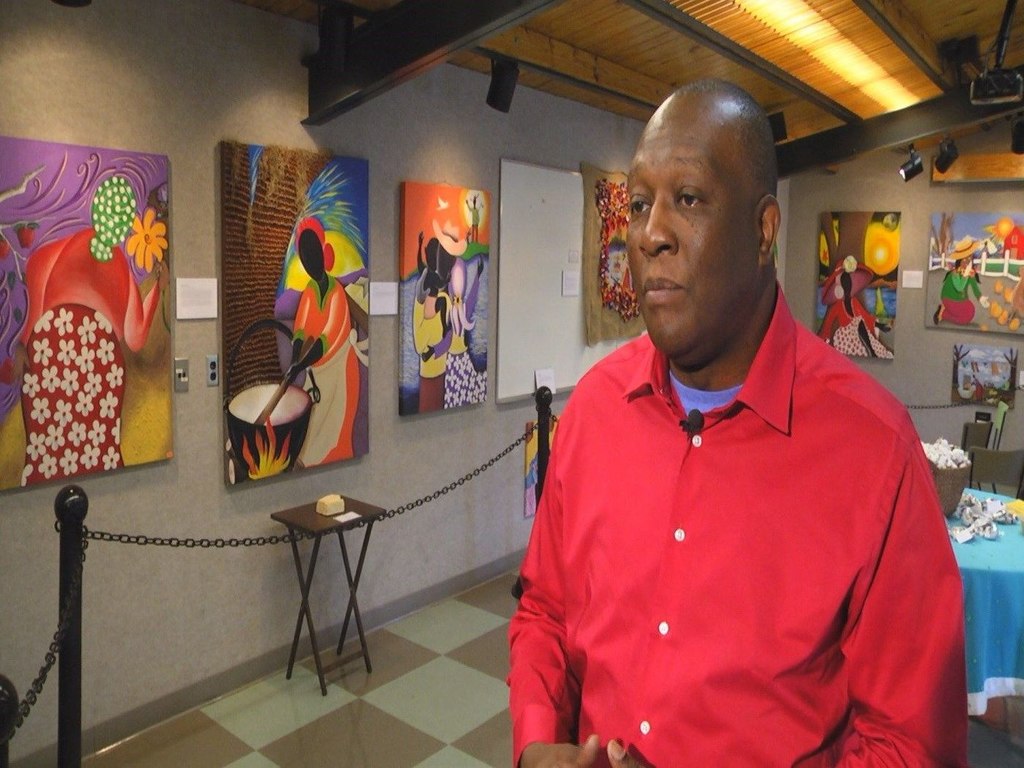

 RSS Feed
RSS Feed
